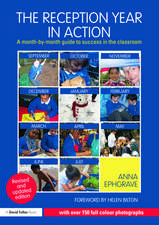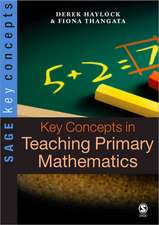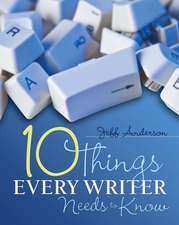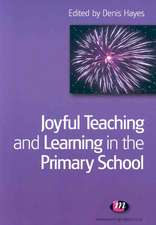Mathematics Formative Assessment, Volume 1: 75 Practical Strategies for Linking Assessment, Instruction, and Learning: Corwin Mathematics Series
Autor Page D. Keeley, Cheryl Rose Tobeyen Limba Engleză Paperback – 2 noi 2011
Din seria Corwin Mathematics Series
-
 Preț: 244.91 lei
Preț: 244.91 lei -
 Preț: 199.84 lei
Preț: 199.84 lei -
 Preț: 272.35 lei
Preț: 272.35 lei -
 Preț: 264.72 lei
Preț: 264.72 lei -
 Preț: 293.23 lei
Preț: 293.23 lei -
 Preț: 280.86 lei
Preț: 280.86 lei -
 Preț: 244.08 lei
Preț: 244.08 lei -
 Preț: 251.77 lei
Preț: 251.77 lei -
![The Five Practices in Practice [Elementary]: Successfully Orchestrating Mathematics Discussions in Your Elementary Classroom](https://i3.books-express.ro/bs/9781544321134/the-five-practices-in-practice-elementary.jpg) Preț: 269.61 lei
Preț: 269.61 lei -
 Preț: 253.90 lei
Preț: 253.90 lei -
 Preț: 246.82 lei
Preț: 246.82 lei -
 Preț: 270.31 lei
Preț: 270.31 lei -
 Preț: 343.97 lei
Preț: 343.97 lei -
 Preț: 267.12 lei
Preț: 267.12 lei -
 Preț: 98.55 lei
Preț: 98.55 lei -
 Preț: 269.61 lei
Preț: 269.61 lei -
 Preț: 223.03 lei
Preț: 223.03 lei -
 Preț: 288.55 lei
Preț: 288.55 lei -
 Preț: 269.89 lei
Preț: 269.89 lei -
 Preț: 242.39 lei
Preț: 242.39 lei -
 Preț: 261.92 lei
Preț: 261.92 lei -
 Preț: 270.97 lei
Preț: 270.97 lei -
![Mathematize It! [Grades K-2]: Going Beyond Key Words to Make Sense of Word Problems, Grades K-2](https://i0.books-express.ro/bs/9781544389851/mathematize-it-grades-k-2.jpg) Preț: 246.00 lei
Preț: 246.00 lei -
 Preț: 266.44 lei
Preț: 266.44 lei -
 Preț: 274.63 lei
Preț: 274.63 lei -
 Preț: 245.73 lei
Preț: 245.73 lei -
 Preț: 258.92 lei
Preț: 258.92 lei -
 Preț: 273.71 lei
Preț: 273.71 lei -
![Answers to Your Biggest Questions About Teaching Secondary Math: Five to Thrive [series]](https://i4.books-express.ro/bs/9781071870792/answers-to-your-biggest-questions-about-teaching-secondary-math.jpg) Preț: 269.83 lei
Preț: 269.83 lei -
 Preț: 304.93 lei
Preț: 304.93 lei -
![Answers to Your Biggest Questions About Teaching Elementary Math: Five to Thrive [series]](https://i1.books-express.ro/bs/9781071857717/answers-to-your-biggest-questions-about-teaching-elementary-math.jpg) Preț: 237.29 lei
Preț: 237.29 lei -
 Preț: 274.00 lei
Preț: 274.00 lei -
 Preț: 265.76 lei
Preț: 265.76 lei -
 Preț: 239.55 lei
Preț: 239.55 lei -
 Preț: 266.03 lei
Preț: 266.03 lei -
 Preț: 235.11 lei
Preț: 235.11 lei -
 Preț: 239.79 lei
Preț: 239.79 lei -
 Preț: 272.08 lei
Preț: 272.08 lei -
 Preț: 251.77 lei
Preț: 251.77 lei -
 Preț: 239.44 lei
Preț: 239.44 lei -
 Preț: 268.76 lei
Preț: 268.76 lei -
 Preț: 284.73 lei
Preț: 284.73 lei -
 Preț: 269.07 lei
Preț: 269.07 lei -
 Preț: 246.27 lei
Preț: 246.27 lei -
 Preț: 265.76 lei
Preț: 265.76 lei -
![Mathematize It! [Grades 6-8]: Going Beyond Key Words to Make Sense of Word Problems, Grades 6-8](https://i3.books-express.ro/bs/9781506354484/mathematize-it-grades-6-8.jpg) Preț: 246.82 lei
Preț: 246.82 lei -
![The Five Practices in Practice [Middle School]: Successfully Orchestrating Mathematics Discussions in Your Middle School Classroom](https://i3.books-express.ro/bs/9781544321189/the-five-practices-in-practice-middle-school.jpg) Preț: 269.35 lei
Preț: 269.35 lei -
 Preț: 264.66 lei
Preț: 264.66 lei -
 Preț: 247.81 lei
Preț: 247.81 lei
Preț: 292.41 lei
Nou
Puncte Express: 439
Preț estimativ în valută:
55.96€ • 58.21$ • 46.20£
55.96€ • 58.21$ • 46.20£
Carte disponibilă
Livrare economică 24 martie-07 aprilie
Livrare express 07-13 martie pentru 39.15 lei
Preluare comenzi: 021 569.72.76
Specificații
ISBN-13: 9781412968126
ISBN-10: 1412968127
Pagini: 256
Ilustrații: Illustrations
Dimensiuni: 178 x 254 x 13 mm
Greutate: 0.54 kg
Ediția:annotated ed.
Editura: SAGE Publications
Colecția Corwin
Seria Corwin Mathematics Series
Locul publicării:Thousand Oaks, United States
ISBN-10: 1412968127
Pagini: 256
Ilustrații: Illustrations
Dimensiuni: 178 x 254 x 13 mm
Greutate: 0.54 kg
Ediția:annotated ed.
Editura: SAGE Publications
Colecția Corwin
Seria Corwin Mathematics Series
Locul publicării:Thousand Oaks, United States
Recenzii
"This book is a wonderful resource for integrating formative assessment into student-centered instruction. The authors describe numerous ways teachers can access the many levels of student understanding. It belongs on every mathematics teacher’s shelf."
"This book contains an incredible set of Math FACTs – Formative Assessment Classroom Techniques. If you have been curious about Formative Assessment or how to implement it in your math classroom, this book provides the tools to get you started."
"This book features formative assessment strategies specifically written for math and can be used in any math class. A book that we have been waiting for."
"This book is a game-changer! By putting theory into practical digestible units, Mathematics Formative Assessment gives teachers of all levels a bank of techniques to design standards-aligned classes. I wish I had something like this 20 years ago when I was first teaching."
"Coaches and other teacher leaders will find this compendium of assessment strategies invaluable."
"Most important, Keeley and Tobey discuss extensively the use of teh data generated to inform teaching. Coaches and other teacher leaders will find this compendium of assessment strategies invaluable."
"This book contains an incredible set of Math FACTs – Formative Assessment Classroom Techniques. If you have been curious about Formative Assessment or how to implement it in your math classroom, this book provides the tools to get you started."
"This book features formative assessment strategies specifically written for math and can be used in any math class. A book that we have been waiting for."
"This book is a game-changer! By putting theory into practical digestible units, Mathematics Formative Assessment gives teachers of all levels a bank of techniques to design standards-aligned classes. I wish I had something like this 20 years ago when I was first teaching."
"Coaches and other teacher leaders will find this compendium of assessment strategies invaluable."
"Most important, Keeley and Tobey discuss extensively the use of teh data generated to inform teaching. Coaches and other teacher leaders will find this compendium of assessment strategies invaluable."
Cuprins
Preface
Acknowledgments
About the Authors
1. An Introduction to Formative Assessment Classroom Techniques (FACTs)
What Does a Formative Assessment?Centered Classroom Look Like?
Why Use FACTs?
How Does Research Support the Use of FACTs?
Classroom Environments That Support Formative Assessment
Connecting Teaching and Learning
Making the Shift to a Formative Assessment-Centered Classroom
2. Integrating FACTs With Instruction and Learning
Integrating Assessment and Instruction
Assessment That Promotes Thinking and Learning
Linking Assessment, Instruction, and Learning: The Mathematics Assessment, Instruction, and Learning Cycle (MAIL Cycle)
Stages in the MAIL Cycle
Engagement and Readiness
Eliciting Prior Knowledge
Exploration and Discovery
Concept and Skill Development
Concept and Procedure Transfer
Self-Assessment and Reflection
Selecting and Using FACTs to Strengthen the Link Between Assessment, Instruction, and Learning
3. Considerations for Selecting, Implementing and Using Data From FACTs
Selecting FACTs
Selecting FACTs to Match Learning Goals
FACTs and the Common Core Standards for Mathematics
Selecting FACTs to Match Teaching Goals
The Critical Importance of Classroom Context in Selecting FACTs
Planning to Use and Implement FACTs
Starting Off With Small Steps
Maintaining and Extending Implementation
Using Data From the FACTs
4. Get the FACTs! 75 Mathematics Formative Assessment Classroom Techniques (FACTs)
#1. A & D Statements
#2. Agreement Circles
#3. Always, Sometimes, or Never True
#4. Card Sorts
#5. CCC: Collaborative Clued Corrections
#6. Comments-Only Marking
#7. Commit and Toss
#8. Concept Attainment Cards
#9. Concept Card Mapping
#10. Concept Cartoons
#11. Create the Problem
#12. Every Graph Tells a Story
#13. Example, Nonexample
#14. Fact-First Questioning
#15. Feedback to Feed-Forward
#16. Fist to Five
#17. Four Corners
#18. Frayer Model
#19. Friendly Talk Probes
#20. Give Me Five
#21. Hot Seat Questioning
#22. Human Scatter Graph
#23. Is It Fair?
#24. I Used to Think . . . But Now I Know . . .
#25. Justified List
#26. Justified True-or-False Statements
#27. K-W-L Variations
#28. Learning Goals Inventory (LGI)
#29. Look Back
#30. Matching Cards
#31. Mathematician's Ideas Comparison
#32. More A?More B Probes
#33. Muddiest Point
#34. No-Hands Questioning
#35. Odd One Out
#36. Opposing Views Probes
#37. Overgeneralization Probes
#38. Partner Speaks
#39. Pass the Problem
#40. P-E-O Probes (Predict, Explain, Observe)
#41. Peer-to-Peer Focused Feedback
#42. A Picture Tells a Thousand Words
#43. POMS: Point of Most Significance
#44. Popsicle Stick Questioning
#45. PVF: Paired Verbal Fluency
#46. Question Generating
#47. Response Cards
#48. Same A?Same B Probes
#49. Sequencing Cards
#50. Sticky Bars
#51. Strategy Harvest
#52. Strategy Probe
#53. Student Evaluation of Learning Gains
#54. Student Interviews
#55. Terminology Inventory Probe (TIP)
#56. Ten-Two
#57. Thinking Log
#58. Think-Alouds
#59. Think-Pair-Share
#60. Thought Experiments
#61. Three-Minute Pause
#62. 3-2-1
#63. Thumbs Up, Thumbs Down
#64. Traffic Light Cards
#65. Traffic Light Cups
#66. Traffic Light Dots
#67. Two-Minute Paper
#68. Two or Three Before Me
#69. Two Stars and a Wish
#70. Two Thirds Testing
#71. Volleyball, Not Ping-Pong!
#72. Wait Time Variations
#73. What Are You Doing and Why?
#74. Whiteboarding
#75. Word Sort
Appendix: Annotated Resources for Mathematics Formative Assessment
References
Index
Acknowledgments
About the Authors
1. An Introduction to Formative Assessment Classroom Techniques (FACTs)
What Does a Formative Assessment?Centered Classroom Look Like?
Why Use FACTs?
How Does Research Support the Use of FACTs?
Classroom Environments That Support Formative Assessment
Connecting Teaching and Learning
Making the Shift to a Formative Assessment-Centered Classroom
2. Integrating FACTs With Instruction and Learning
Integrating Assessment and Instruction
Assessment That Promotes Thinking and Learning
Linking Assessment, Instruction, and Learning: The Mathematics Assessment, Instruction, and Learning Cycle (MAIL Cycle)
Stages in the MAIL Cycle
Engagement and Readiness
Eliciting Prior Knowledge
Exploration and Discovery
Concept and Skill Development
Concept and Procedure Transfer
Self-Assessment and Reflection
Selecting and Using FACTs to Strengthen the Link Between Assessment, Instruction, and Learning
3. Considerations for Selecting, Implementing and Using Data From FACTs
Selecting FACTs
Selecting FACTs to Match Learning Goals
FACTs and the Common Core Standards for Mathematics
Selecting FACTs to Match Teaching Goals
The Critical Importance of Classroom Context in Selecting FACTs
Planning to Use and Implement FACTs
Starting Off With Small Steps
Maintaining and Extending Implementation
Using Data From the FACTs
4. Get the FACTs! 75 Mathematics Formative Assessment Classroom Techniques (FACTs)
#1. A & D Statements
#2. Agreement Circles
#3. Always, Sometimes, or Never True
#4. Card Sorts
#5. CCC: Collaborative Clued Corrections
#6. Comments-Only Marking
#7. Commit and Toss
#8. Concept Attainment Cards
#9. Concept Card Mapping
#10. Concept Cartoons
#11. Create the Problem
#12. Every Graph Tells a Story
#13. Example, Nonexample
#14. Fact-First Questioning
#15. Feedback to Feed-Forward
#16. Fist to Five
#17. Four Corners
#18. Frayer Model
#19. Friendly Talk Probes
#20. Give Me Five
#21. Hot Seat Questioning
#22. Human Scatter Graph
#23. Is It Fair?
#24. I Used to Think . . . But Now I Know . . .
#25. Justified List
#26. Justified True-or-False Statements
#27. K-W-L Variations
#28. Learning Goals Inventory (LGI)
#29. Look Back
#30. Matching Cards
#31. Mathematician's Ideas Comparison
#32. More A?More B Probes
#33. Muddiest Point
#34. No-Hands Questioning
#35. Odd One Out
#36. Opposing Views Probes
#37. Overgeneralization Probes
#38. Partner Speaks
#39. Pass the Problem
#40. P-E-O Probes (Predict, Explain, Observe)
#41. Peer-to-Peer Focused Feedback
#42. A Picture Tells a Thousand Words
#43. POMS: Point of Most Significance
#44. Popsicle Stick Questioning
#45. PVF: Paired Verbal Fluency
#46. Question Generating
#47. Response Cards
#48. Same A?Same B Probes
#49. Sequencing Cards
#50. Sticky Bars
#51. Strategy Harvest
#52. Strategy Probe
#53. Student Evaluation of Learning Gains
#54. Student Interviews
#55. Terminology Inventory Probe (TIP)
#56. Ten-Two
#57. Thinking Log
#58. Think-Alouds
#59. Think-Pair-Share
#60. Thought Experiments
#61. Three-Minute Pause
#62. 3-2-1
#63. Thumbs Up, Thumbs Down
#64. Traffic Light Cards
#65. Traffic Light Cups
#66. Traffic Light Dots
#67. Two-Minute Paper
#68. Two or Three Before Me
#69. Two Stars and a Wish
#70. Two Thirds Testing
#71. Volleyball, Not Ping-Pong!
#72. Wait Time Variations
#73. What Are You Doing and Why?
#74. Whiteboarding
#75. Word Sort
Appendix: Annotated Resources for Mathematics Formative Assessment
References
Index
Notă biografică
Descriere
This title follows Page Keeley's bestselling book on Science Formative Assessment. It identifies and describes practical techniques teachers can use to build a rich repertoire of formative assessment strategies for teaching math.















